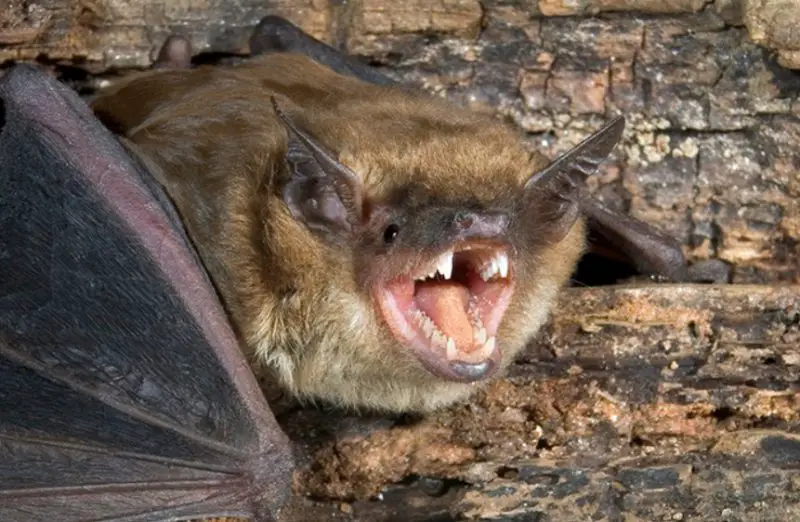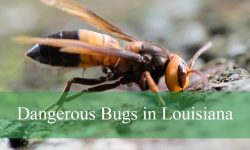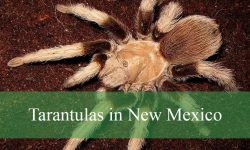As the sun dips below the horizon in Washington State, a different world comes alive—a world filled with quiet rustles, flapping wings, and high-pitched sounds beyond human hearing. Among the most active creatures of this twilight realm are bats, mysterious mammals that rule the night skies. Though often misunderstood, bats are essential to the ecosystem and reveal some truly strange and captivating behaviors once darkness falls.
This article delves into the curious nocturnal habits of bats in Washington, exploring how they hunt, communicate, and interact with their environment. From echolocation to seasonal migrations, you’ll uncover the fascinating routines these elusive creatures follow while the rest of the world sleeps.
Understanding the Role of Bats in Washington’s Nightlife

As darkness falls over Washington State’s vast forests, mountains, and rural areas, bats begin to emerge, taking to the skies in pursuit of food, mates, and roosting spots. These elusive mammals are among the least understood nocturnal creatures, largely because they conduct most of their lives while people sleep. Yet, bats are critical to the local ecosystem.
Washington is home to at least fifteen bat species, each with distinct behaviors, diets, and migration patterns. From the Little Brown Bat to the Townsend’s Big-eared Bat, these creatures have evolved to thrive in the region’s varied environments. While most people associate bats with spooky caves or Halloween decorations, their nighttime routines tell a more fascinating and essential ecological story.
Their activity plays a vital role in pest control and plant health, and scientists studying them have uncovered strange and surprising behaviors. From their ultrasonic navigation to their social dynamics inside roosts, bats in Washington display a blend of intelligence, instinct, and adaptation that is unique among mammals.
Nightfall: The Beginning of Bat Activity
As twilight deepens into night, bats begin to stir from their roosting spots in trees, attics, caves, and crevices. While birds settle down, bats are just beginning their nightly routines. Their internal clocks are triggered by the fading light and dropping temperature, setting in motion one of nature’s most precise timing mechanisms.
Bats in Washington typically emerge shortly after sunset. This timing aligns with the increase in flying insect activity, especially mosquitoes, moths, and beetles, which make up the bulk of their diet. Researchers have observed that bats adjust their emergence based on environmental factors such as temperature, moonlight, and humidity, suggesting a highly adaptable circadian rhythm.
Interestingly, some species, like the Yuma Myotis, will delay their activity on colder or windier nights. This delay helps conserve energy and reduce risk, as fewer insects are active in those conditions. Their patience and ability to fine-tune their behavior to weather patterns demonstrate a deep-rooted survival mechanism.
Echolocation and Aerial Mastery in the Night Sky
One of the most mysterious and fascinating aspects of bat behavior is their echolocation ability. Using high-pitched sound pulses that bounce off objects, bats can “see” their surroundings through sound. This biological sonar system enables them to navigate in total darkness with incredible precision.
In Washington State, where terrain can vary from coastal forests to high mountain valleys, echolocation is particularly useful. Bats must avoid obstacles like tree branches, cliffs, and buildings while also hunting prey in flight. They emit echolocation calls through their mouth or nose, depending on the species, and interpret the returning echoes to build a mental map of their surroundings.
Different bat species emit unique echolocation frequencies, fine-tuned to the type of environment they occupy and the prey they target. For example, the Silver-haired Bat uses low-frequency calls ideal for detecting insects in forested areas, while the Hoary Bat’s calls are adapted for open-air hunting. This intricate adaptation reveals a level of specialization and intelligence not often attributed to such small mammals.
Feeding Habits and Insect Control
While humans may sleep peacefully at night, bats are hard at work consuming thousands of insects, playing a critical role in pest control. In fact, one bat can consume up to half its body weight in insects every night. This makes them invaluable to agriculture and public health, especially in areas like Washington where mosquito populations can surge during warm seasons.
Bats tend to feed in two primary waves. The first occurs shortly after dusk when they catch the early swarm of insects. After a short rest period, they resume hunting in the early morning hours, just before dawn. During these hours, bats rely heavily on their agility, speed, and echolocation to snatch insects mid-flight.
Some bats, like the Big Brown Bat, even specialize in hunting hard-bodied insects such as beetles, which many other predators avoid. This dietary flexibility not only ensures survival but also contributes to a more balanced ecosystem. Their nighttime feasts significantly reduce the population of crop-damaging pests, offering a natural and chemical-free method of pest control.
The Social Life of Bats After Dark
Contrary to the belief that bats are solitary creatures, many species in Washington State are highly social, especially during the night. Roosts often house dozens, even hundreds of individuals that communicate with one another using vocalizations and scent markers. These social interactions range from grooming and mating to establishing territory.
Bats exhibit a variety of social behaviors depending on the time of year. During maternity season in early summer, female bats form large nursery colonies to raise their pups communally. They display coordinated behavior such as synchronized feeding times and even take turns watching over the young.
In autumn, males become more active and vocal as they search for mates. This period of increased social behavior includes mating displays, scent marking, and aerial chases. These interactions often occur under the cover of darkness, making them difficult to observe, yet they are crucial to the species’ survival. The depth of their communication and interaction suggests a rich social structure that scientists are only beginning to understand.
Roosting Behaviors and Night Shelter
During the night, bats will occasionally return to their roosts for short rest periods before resuming feeding. The type of roost varies widely by species. While some prefer hollow trees or caves, others use man-made structures such as attics, barns, and under bridges.
In Washington, bat conservationists have encouraged the installation of bat boxes in rural areas to provide safe roosting sites. These structures mimic natural tree cavities and help support populations that have lost habitat due to urban development. Roosts are essential not only for resting but also for thermoregulation, social bonding, and raising young.
When choosing a night roost, bats seek shelter that is warm, dark, and secure from predators. These spots allow them to conserve energy and digest their food. Some species will even switch roosts during the night based on temperature fluctuations. This nocturnal rest behavior is part of their overall energy management system, helping them survive long, cold Washington nights.
Seasonal Variations in Night Behavior
Bat behavior in Washington shifts dramatically with the seasons. In spring and summer, when insects are abundant, bats are highly active throughout the night. Their metabolism speeds up, and reproductive activities peak, leading to more pronounced nighttime activity.
As autumn approaches and insect numbers dwindle, bats begin to prepare for hibernation or migration. Those that hibernate, such as the Townsend’s Big-eared Bat, will reduce their night activity and enter torpor—an energy-saving state that conserves fat reserves. Others, like the Hoary Bat, migrate to warmer climates and become less visible in local ecosystems.
During transitional periods like late summer and early fall, you may observe unusual behaviors such as swarming, where bats gather in large numbers around cave entrances. These gatherings serve multiple purposes, including mating and assessing hibernation sites. These seasonal rituals underscore the complexity and adaptability of their nightly lives.
Predators and Threats in the Night
Although bats are skilled at navigating and hunting in darkness, they are not without threats. Owls, raccoons, snakes, and domestic cats all pose danger to bats during their nighttime forays. In urban areas, artificial lights, cars, and windows increase the risk of injury.
Light pollution in particular disrupts bat behavior. Excessive lighting can interfere with their natural hunting patterns and disorient their echolocation. Some species will avoid well-lit areas altogether, leading to fragmented habitats and reduced feeding opportunities.
In addition to natural threats, bats in Washington face serious health challenges. White-nose Syndrome, a fungal disease affecting hibernating bats, has devastated populations across North America. Understanding their nighttime behavior is critical in helping scientists track disease spread and implement conservation strategies.
Bat Sounds and Nighttime Vocalizations
Aside from echolocation, bats produce a range of social calls that are inaudible to the human ear. These vocalizations are used for mating, navigation, conflict resolution, and coordination. Each species has its own “language,” and within that, individuals can recognize familiar members of their colony.
Washington researchers have recorded complex call patterns that suggest a sophisticated system of communication. Males often use trills or rapid chirps to attract females or ward off rivals. Mothers use distinctive calls to locate and reunite with their pups in large colonies, even in total darkness.
These nocturnal vocalizations are an important area of study. Acoustic monitoring is now a leading method for studying bat populations non-invasively. Specialized detectors allow scientists to record and analyze calls, offering valuable insights into behavior, population health, and habitat usage—all while bats continue their secretive nighttime routines.
Human Interaction and Myths About Bat Behavior
Public perception of bats has often been shaped by myths and misinformation. Many people still believe that bats are blind, aggressive, or prone to entangling in human hair. These myths persist despite scientific evidence to the contrary. Bats are gentle, intelligent creatures that avoid human contact and provide enormous ecological benefits.
In Washington, conservation programs are working to reshape public opinion through education and community involvement. Bat walks, evening lectures, and citizen science initiatives have helped residents better understand the role of bats in local ecosystems. By learning about their strange and wonderful nighttime habits, people gain appreciation for these misunderstood animals.
Encouraging responsible bat conservation also involves addressing fears about disease. While bats can carry rabies, the risk of transmission is extremely low. Simple precautions, such as avoiding handling injured bats, go a long way in ensuring safe coexistence. Dispelling these fears helps shift the narrative from one of avoidance to stewardship.
Conclusion: Embracing the Nightlife of Washington’s Bats
Bats in Washington State are far more than shadowy silhouettes flitting across the moonlit sky. They are highly specialized nocturnal mammals with complex behaviors that serve vital roles in pest control, pollination, and biodiversity.
Their strange night habits—ranging from echolocation and communal roosting to mating displays and seasonal migrations—offer a glimpse into one of the most enigmatic lives in the natural world. Understanding these behaviors not only fosters appreciation but also supports conservation efforts that are crucial to maintaining healthy ecosystems.
As our cities expand and environmental challenges grow, protecting the night skies and habitats that bats depend on becomes more important than ever. The next time you see a bat darting overhead at dusk, remember that it’s not just hunting insects—it’s part of a delicate and fascinating nocturnal web that shapes life in Washington State.
FAQs about Bats in Washington State
What time do bats come out at night in Washington?
Bats in Washington typically begin their nightly activity shortly after sunset, around 20 to 30 minutes after dusk, depending on the season and weather conditions.
Are bats in Washington dangerous to humans?
No, bats are not inherently dangerous. While a small percentage may carry rabies, they generally avoid human contact and are beneficial to ecosystems due to their insect-eating habits.
How many bat species live in Washington State?
There are at least 15 species of bats found in Washington, including the Little Brown Bat, Big Brown Bat, and Hoary Bat, each with unique nocturnal behaviors.
Where do bats go during the day?
During daylight hours, bats roost in dark, secluded places such as tree hollows, attics, under bridges, or inside caves, where they can rest safely until nightfall.
Why are bats important to the ecosystem in Washington?
Bats play a vital role in controlling insect populations, particularly mosquitoes and agricultural pests, helping maintain ecological balance and crop health.






